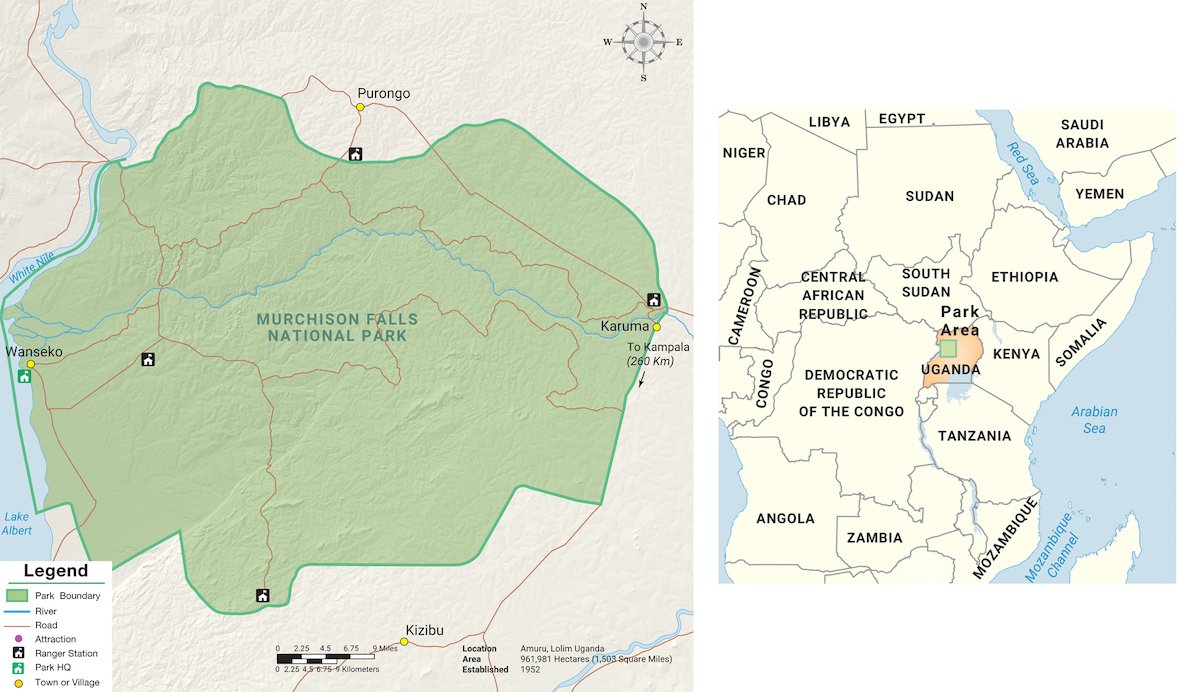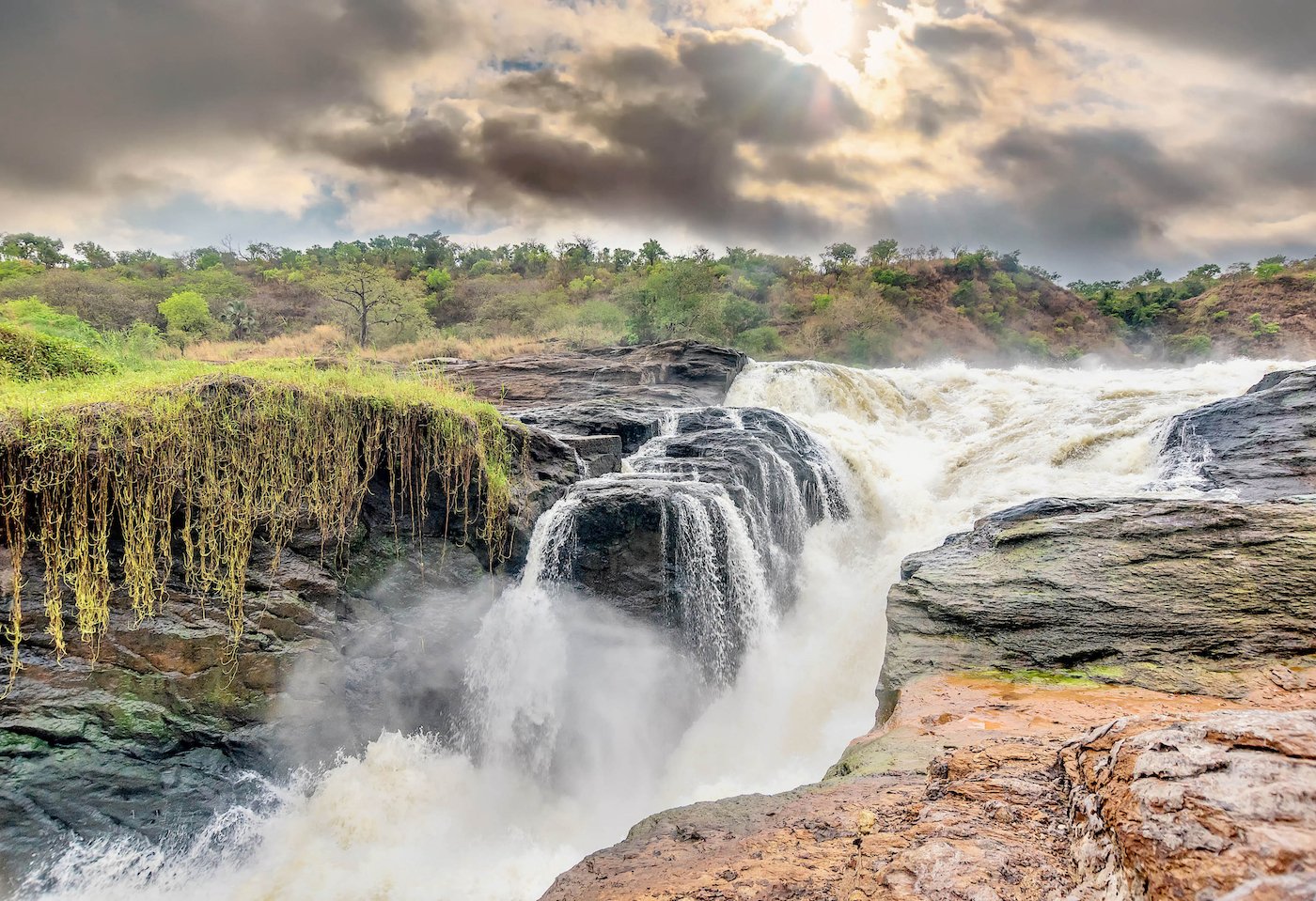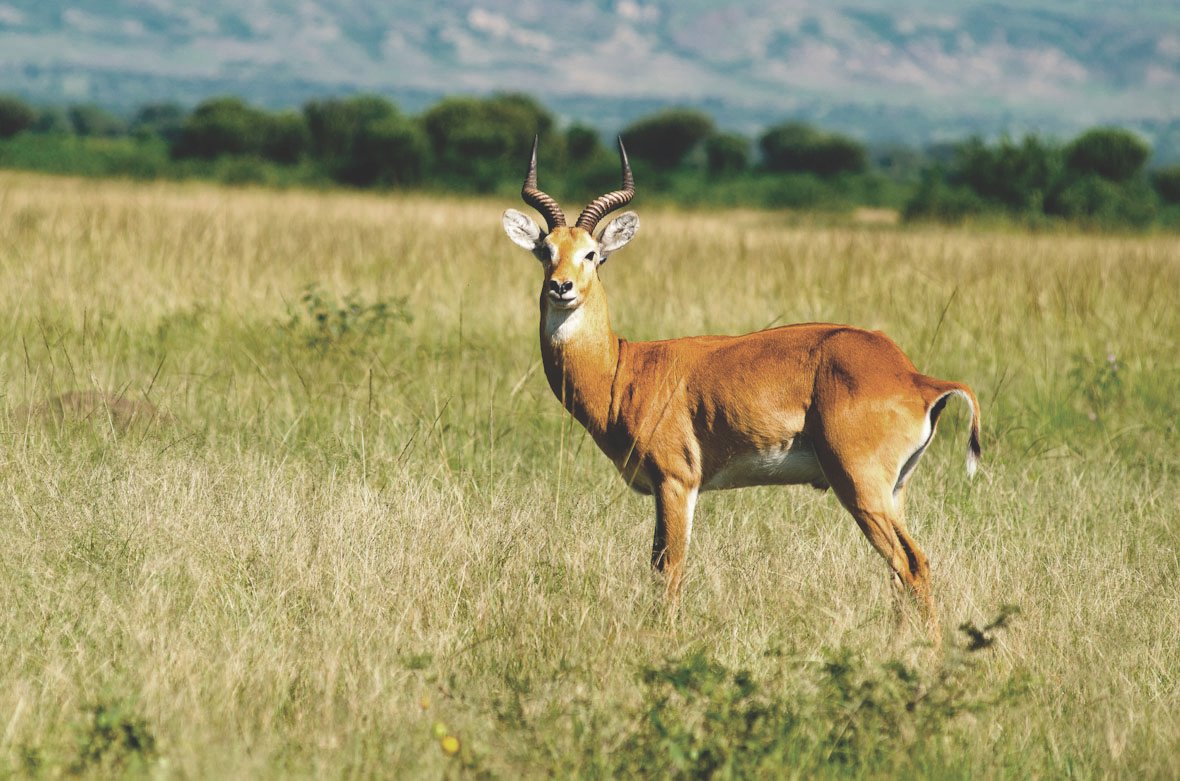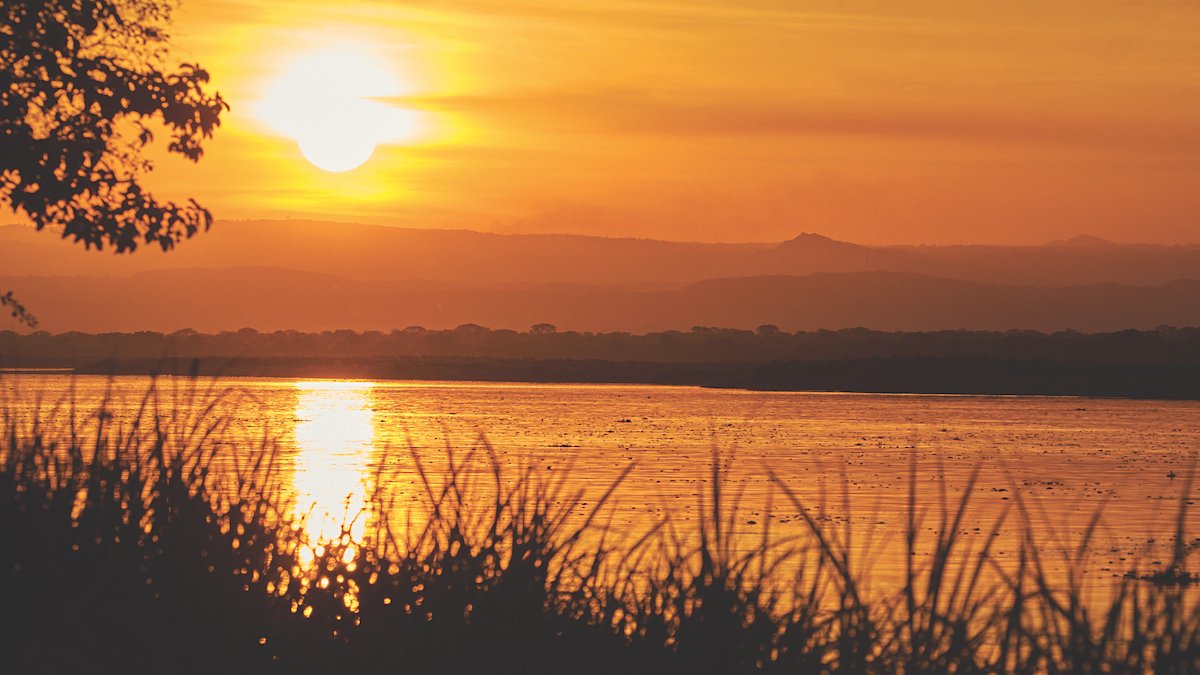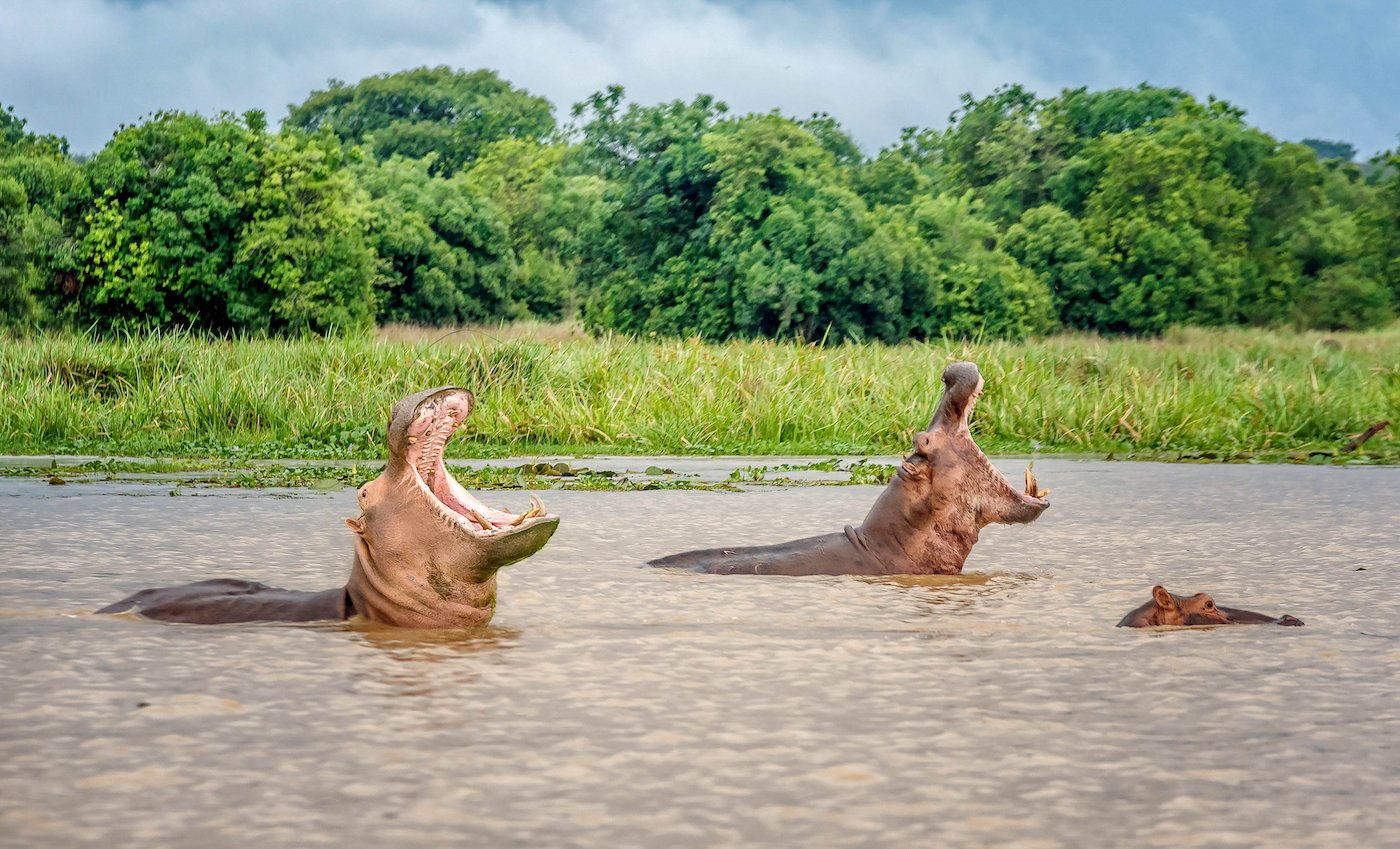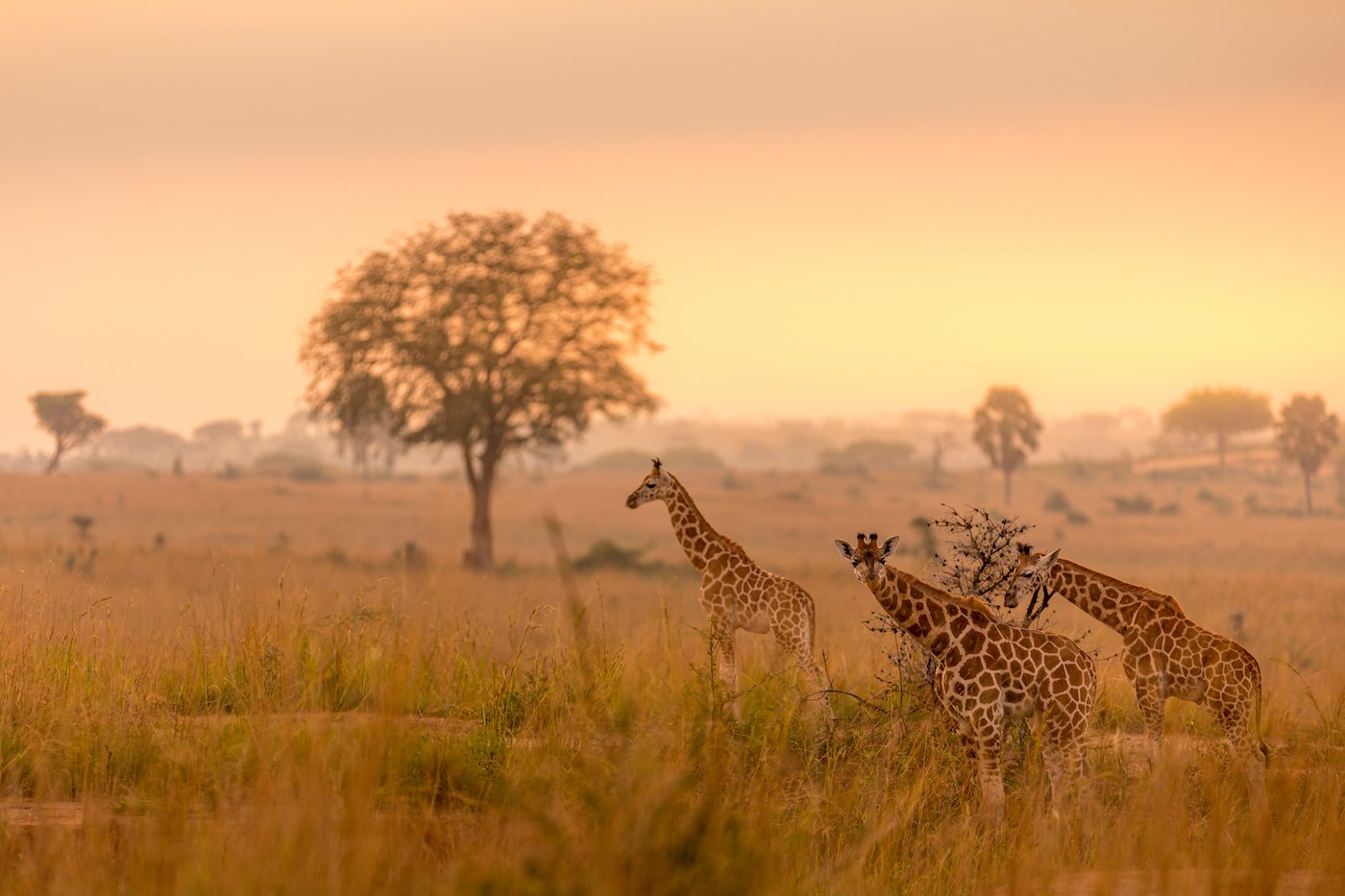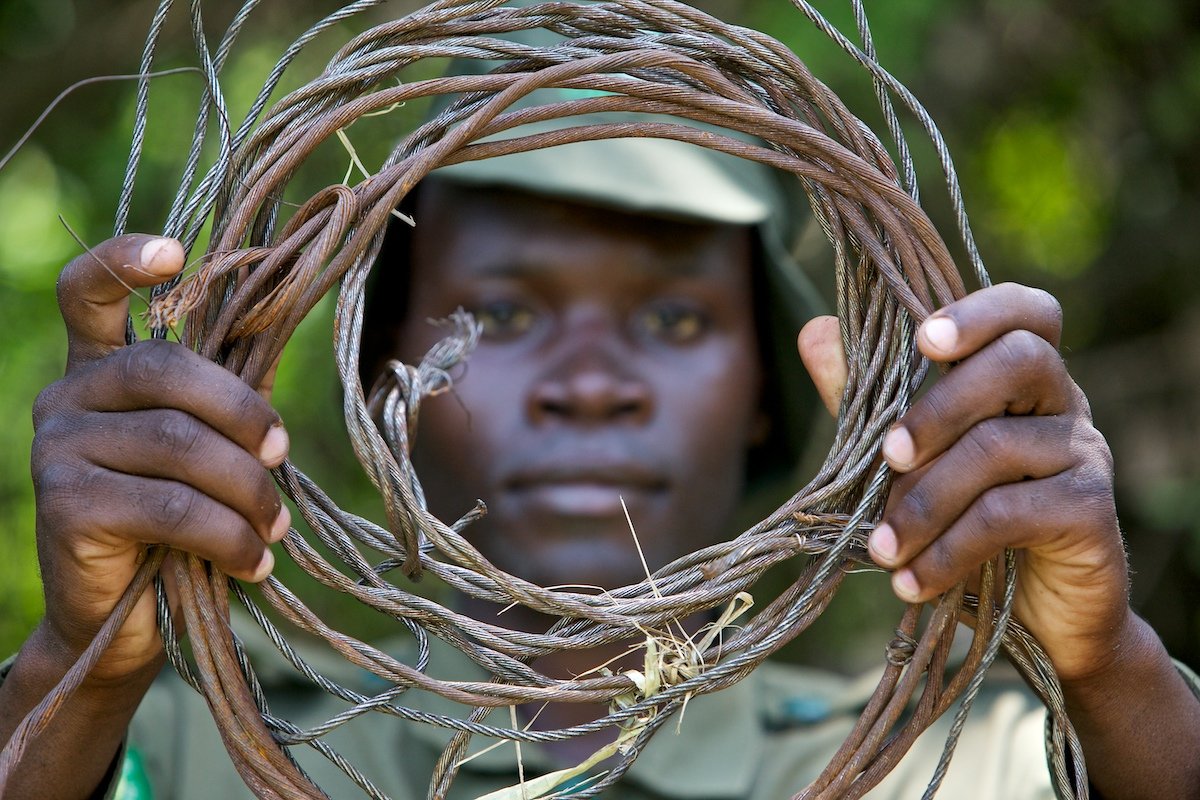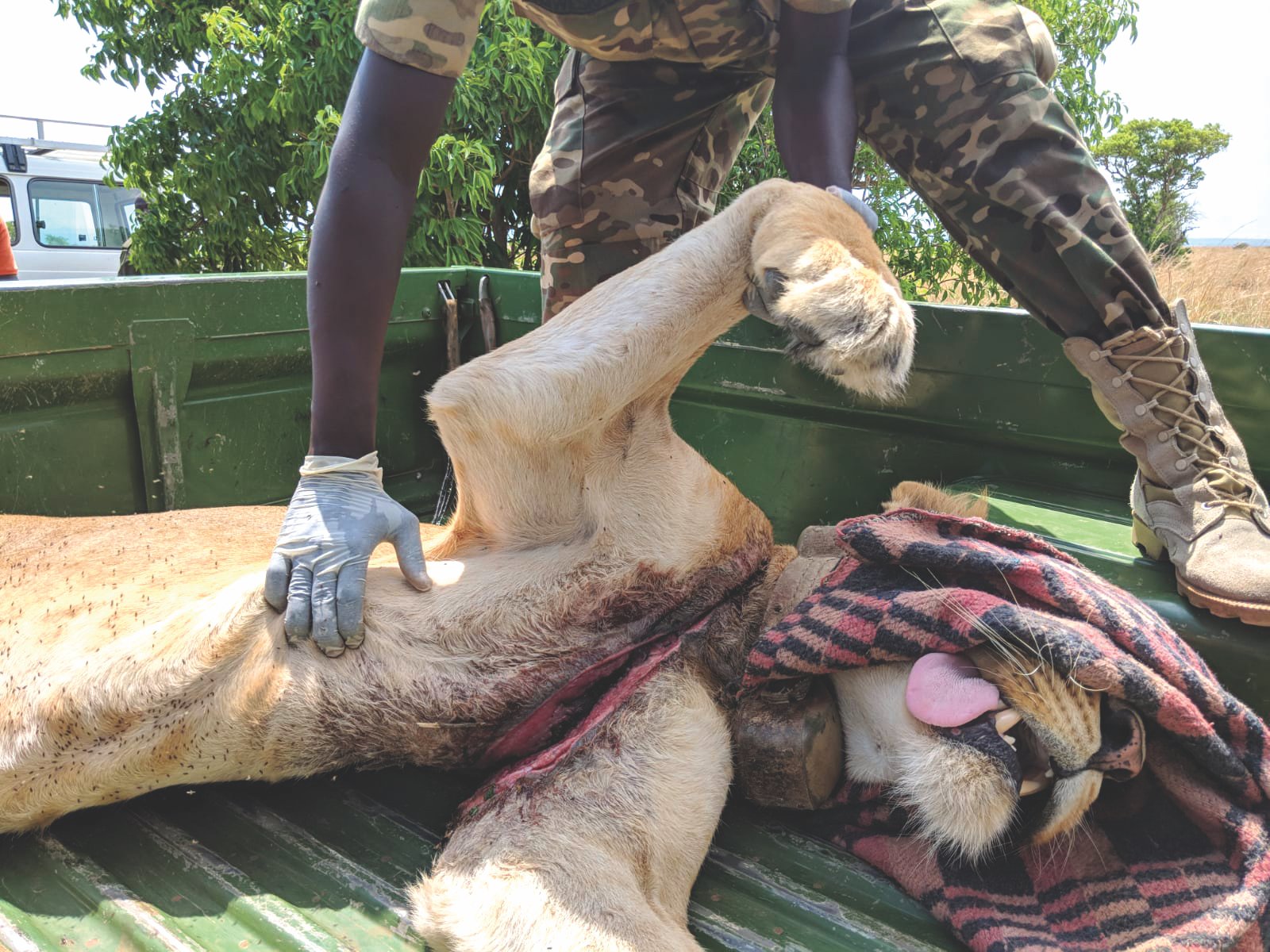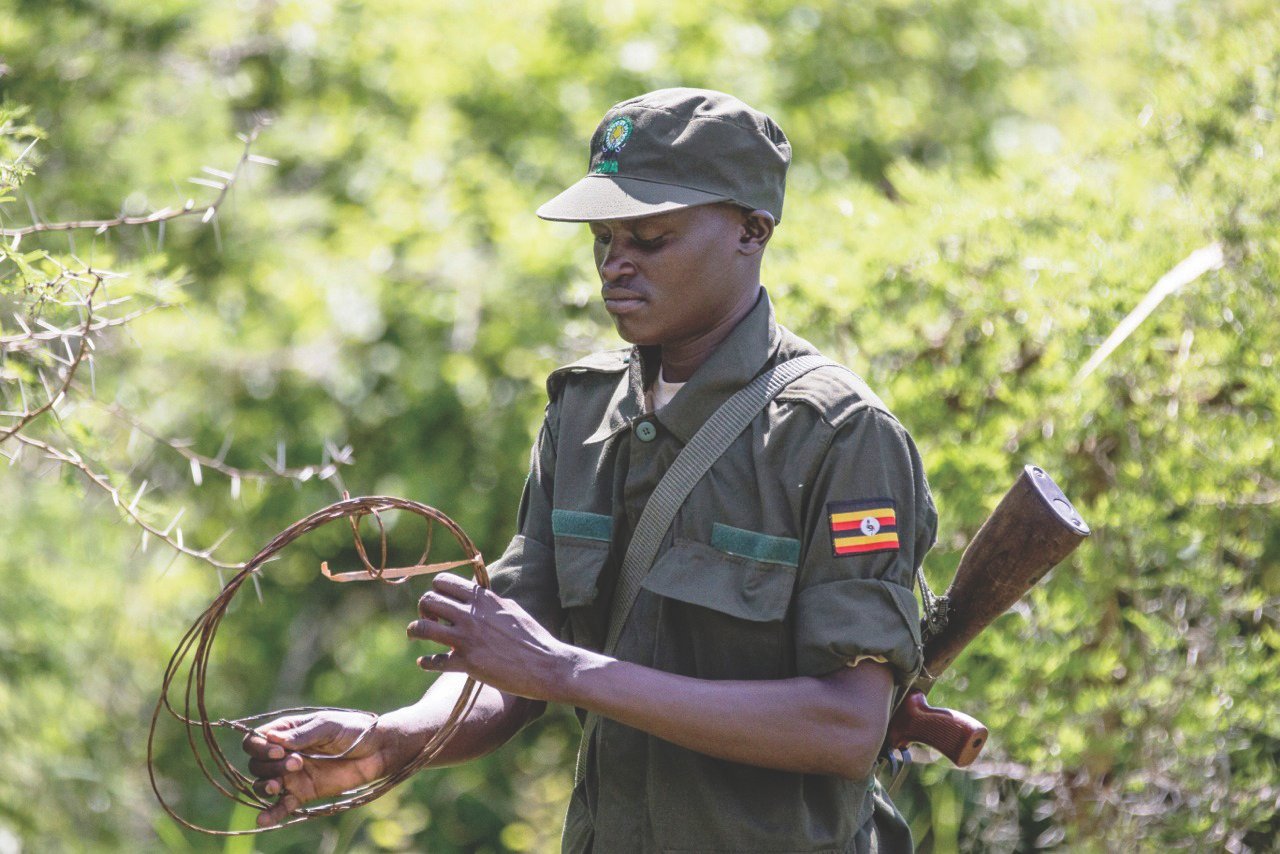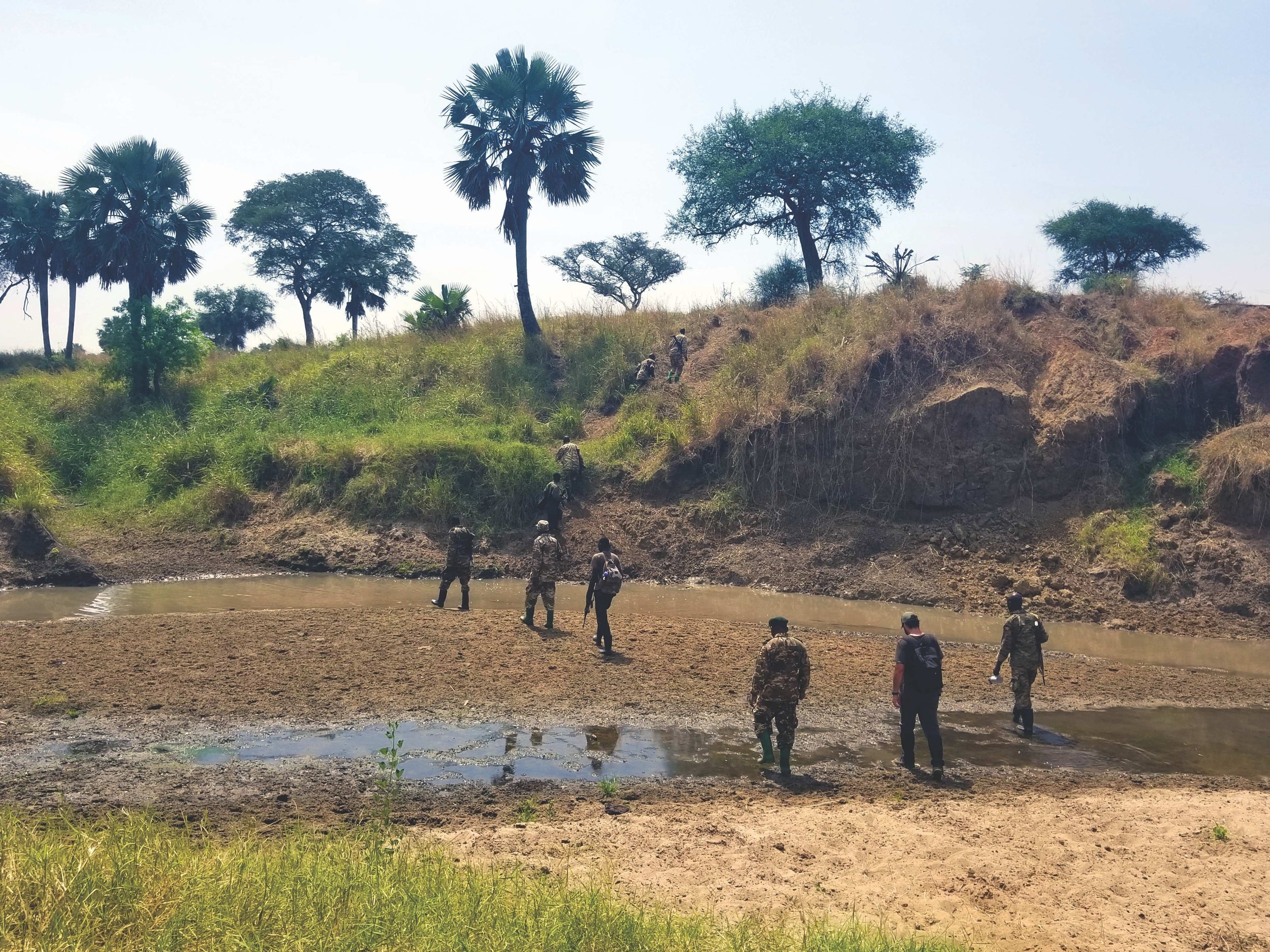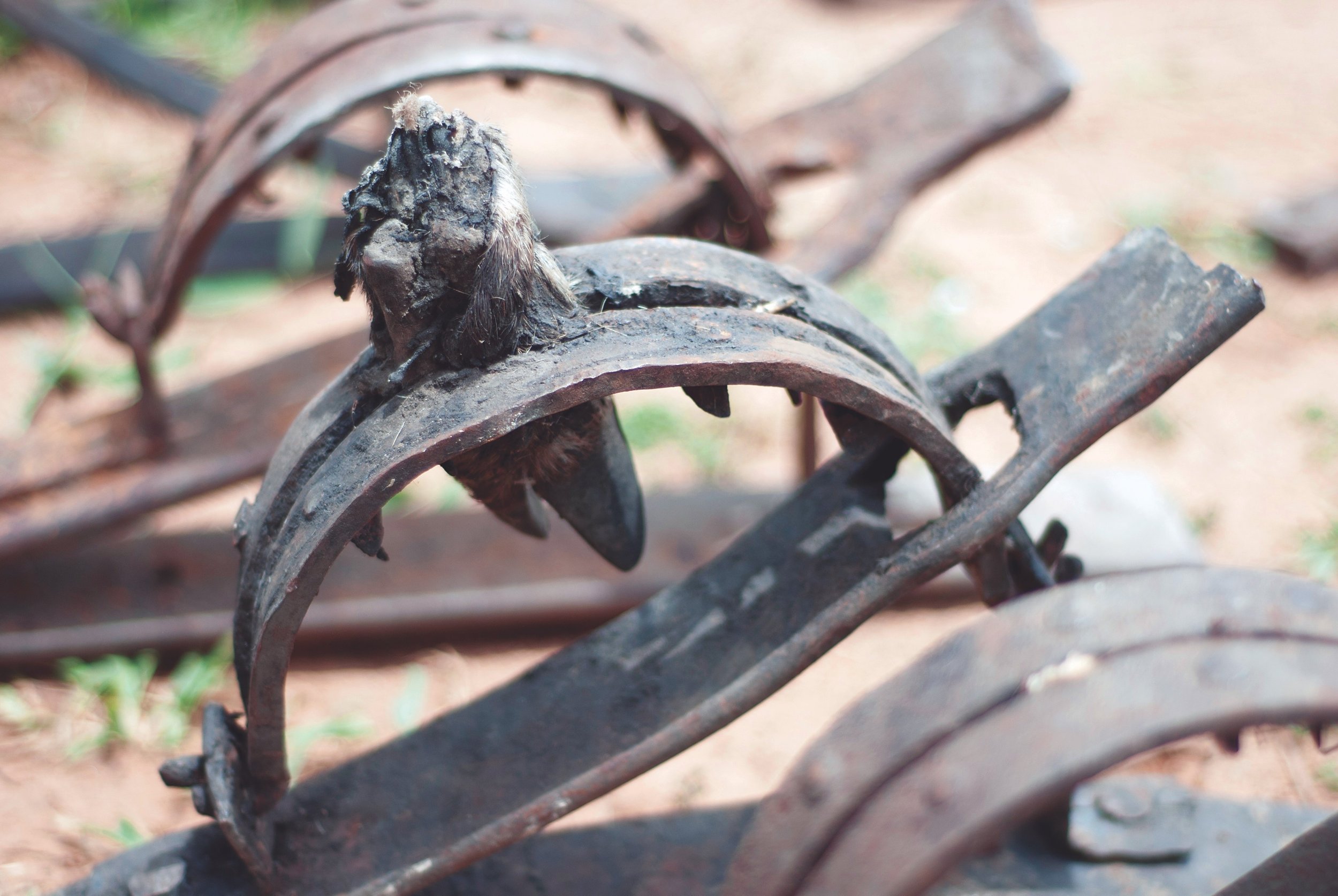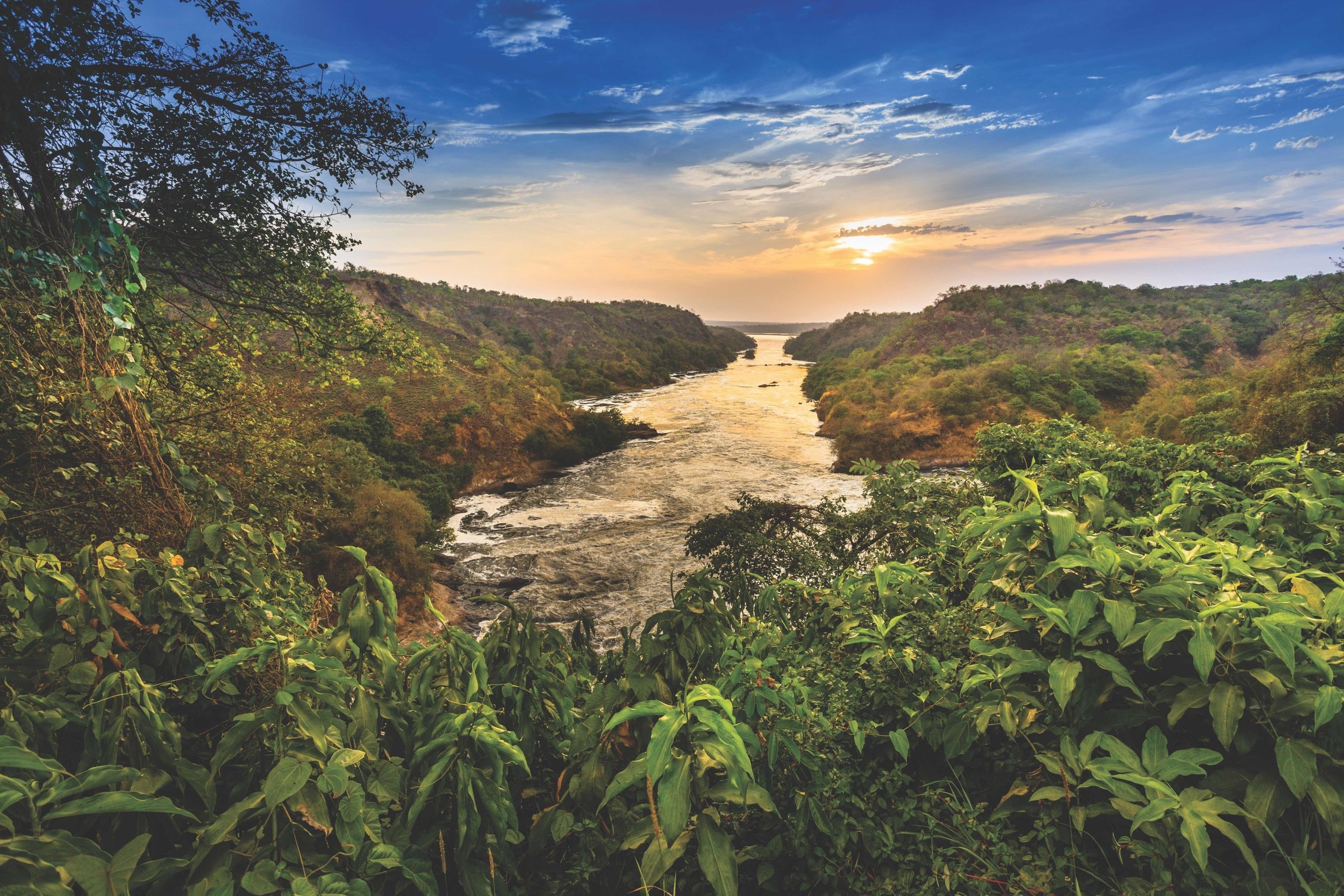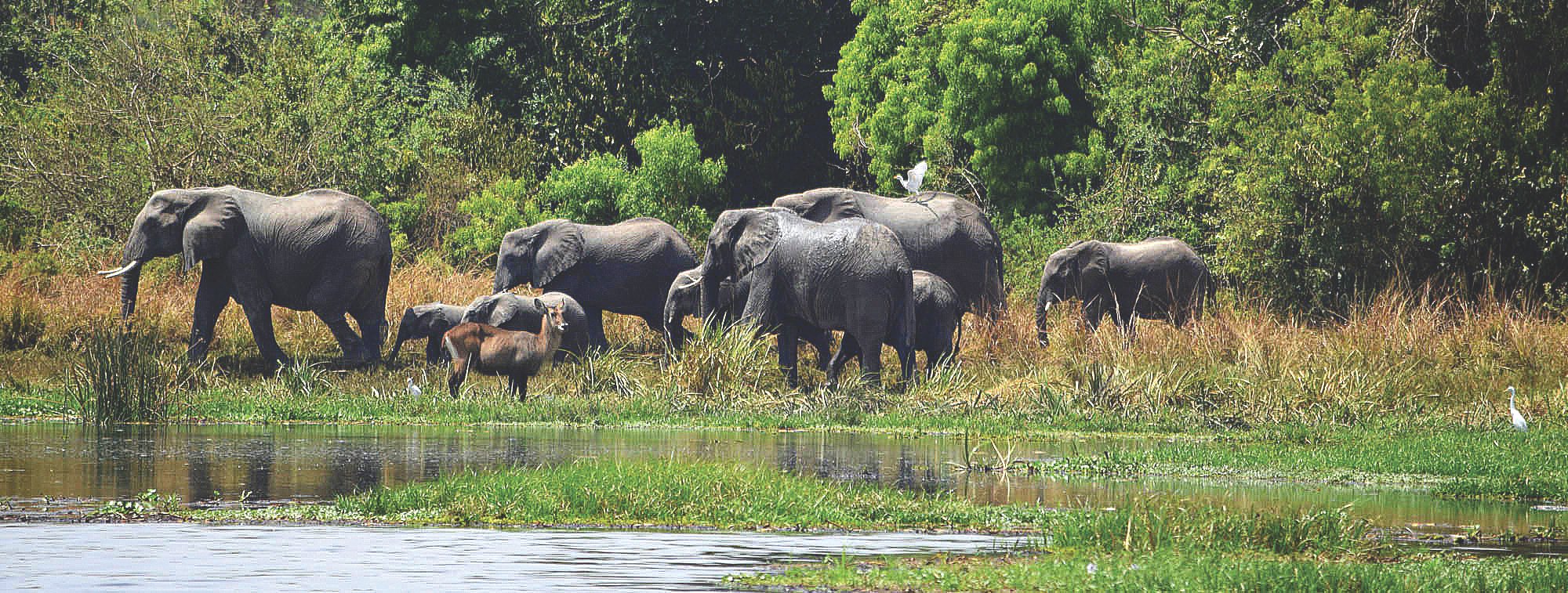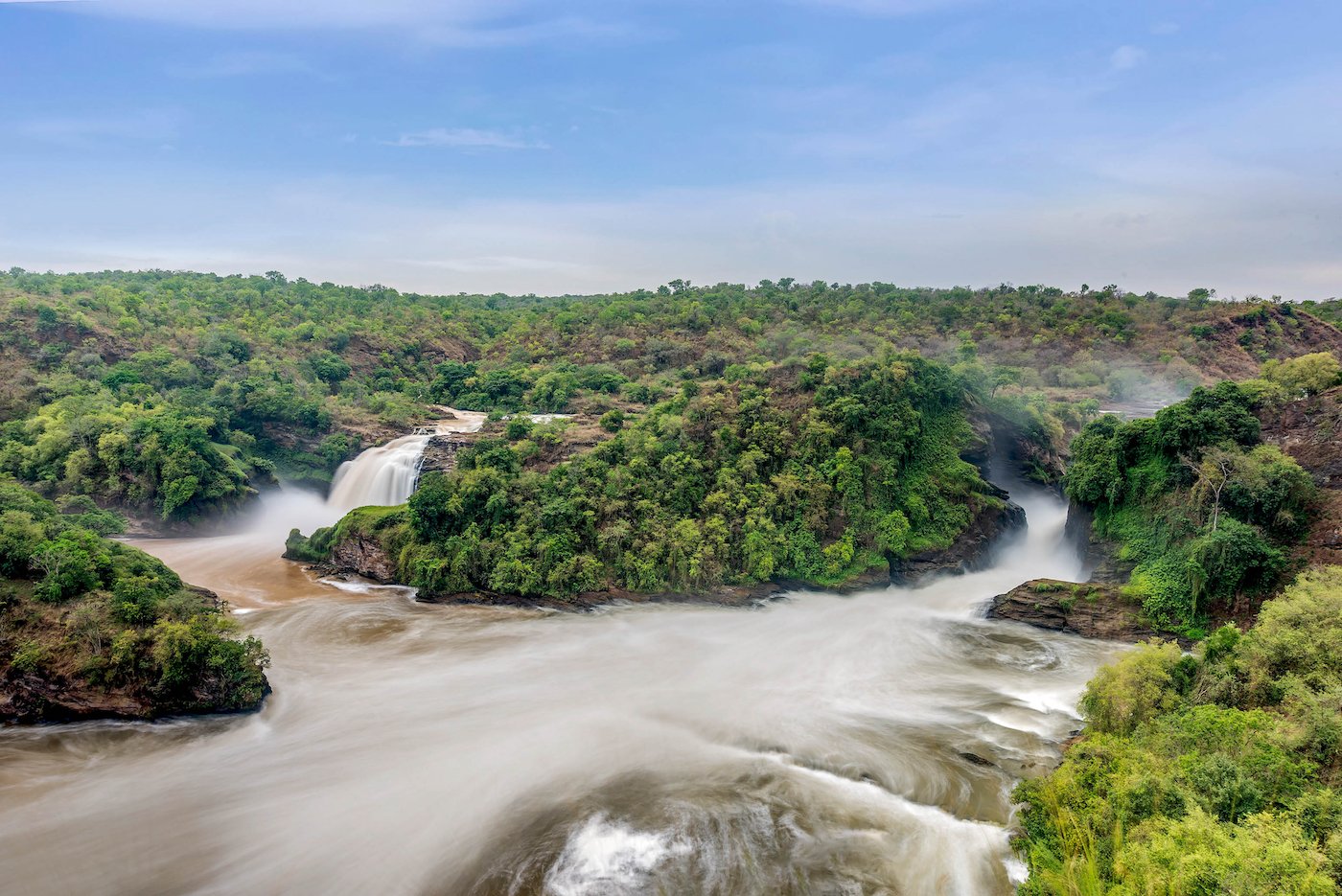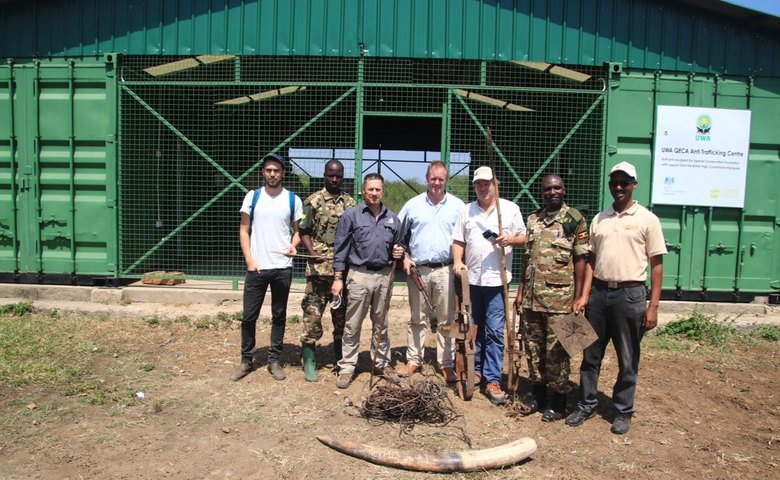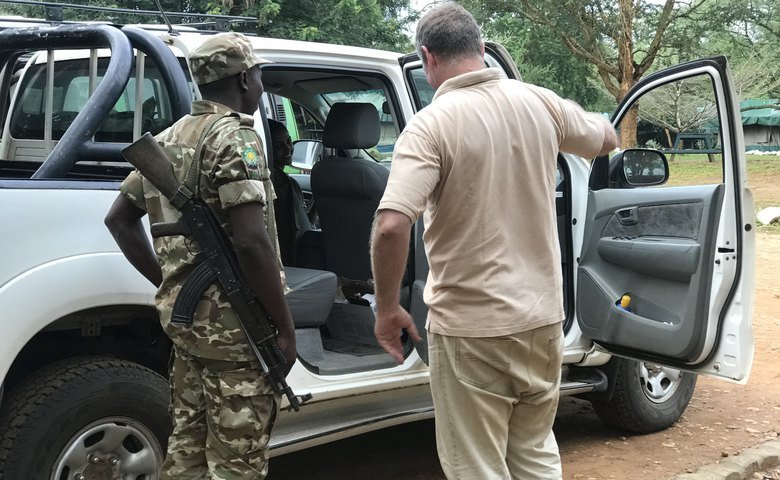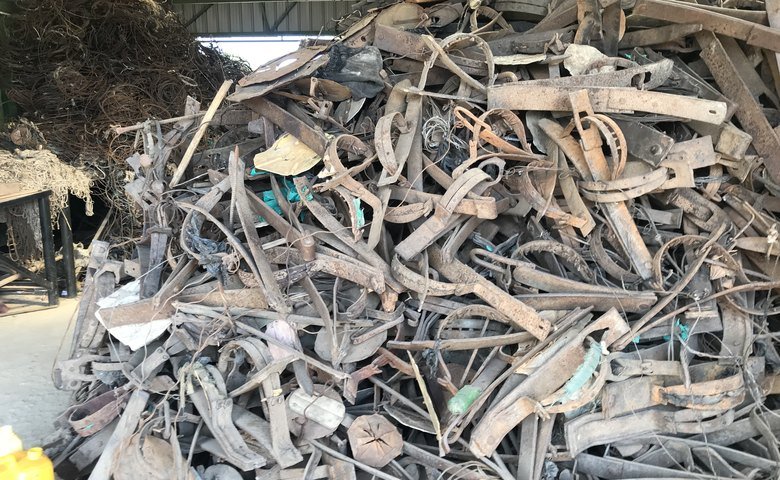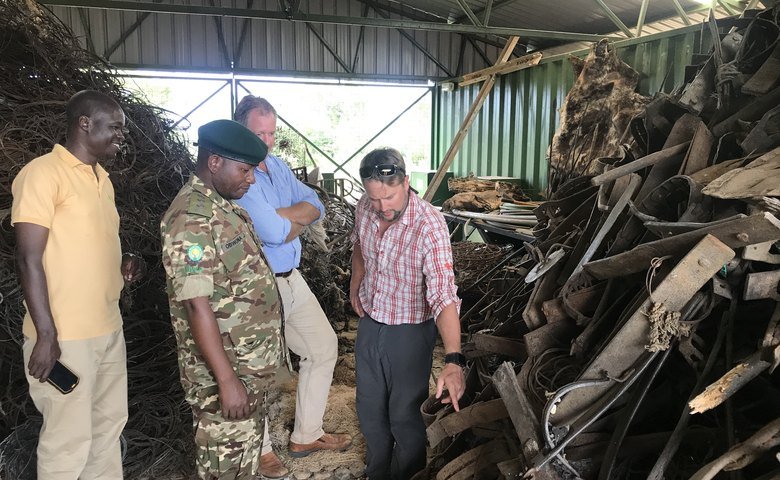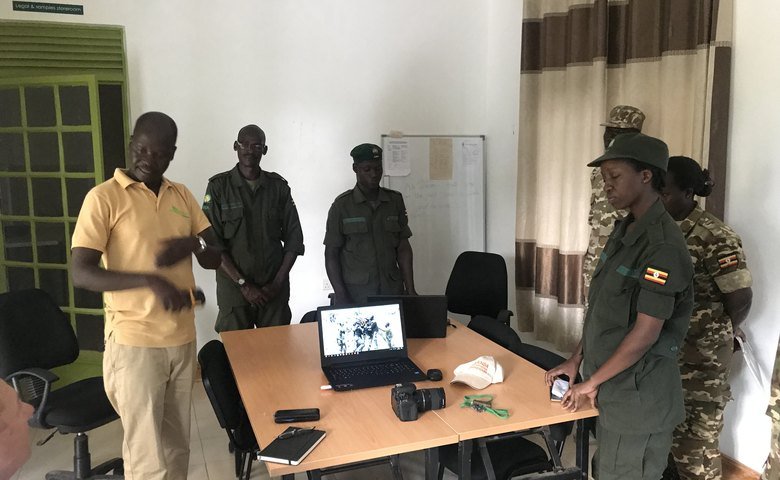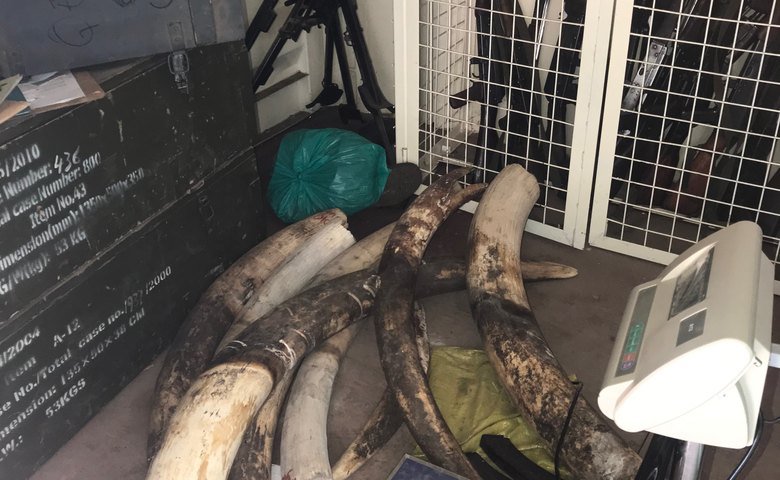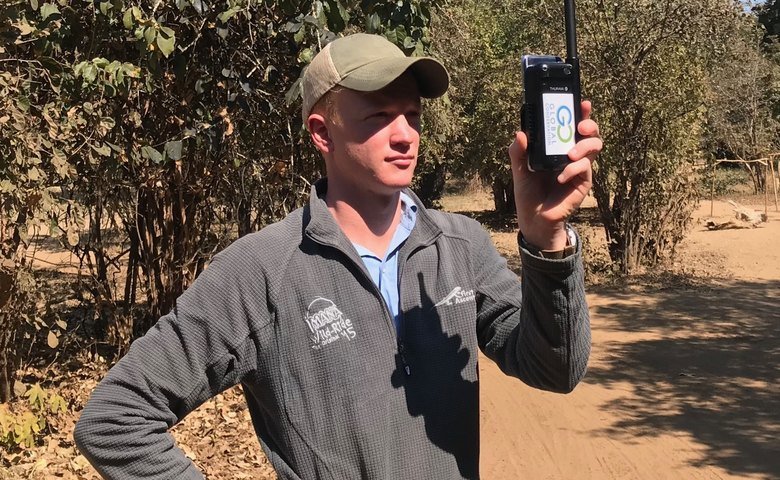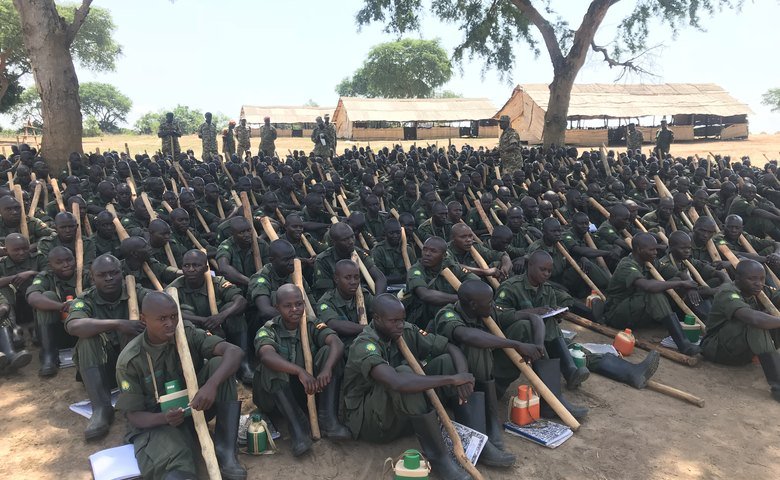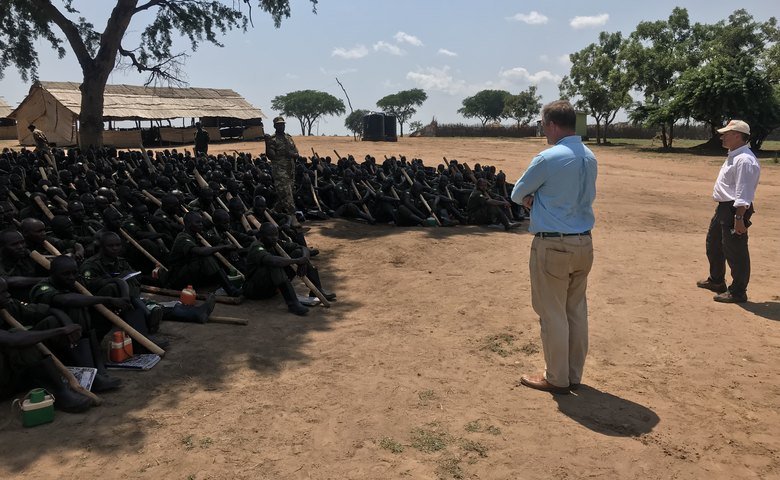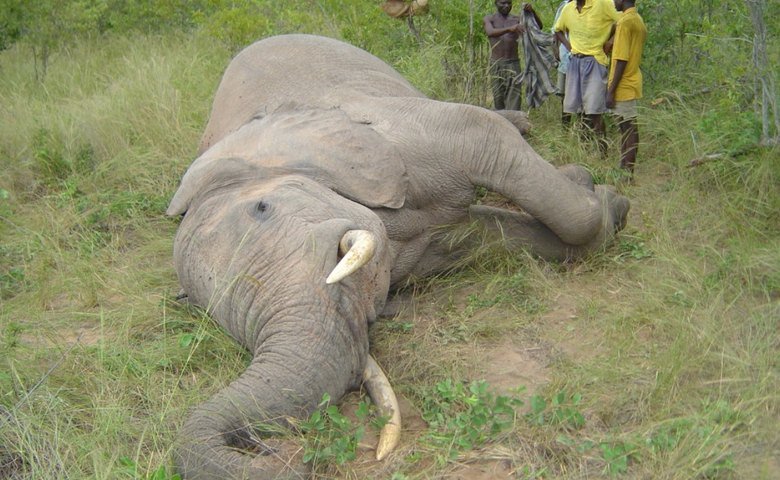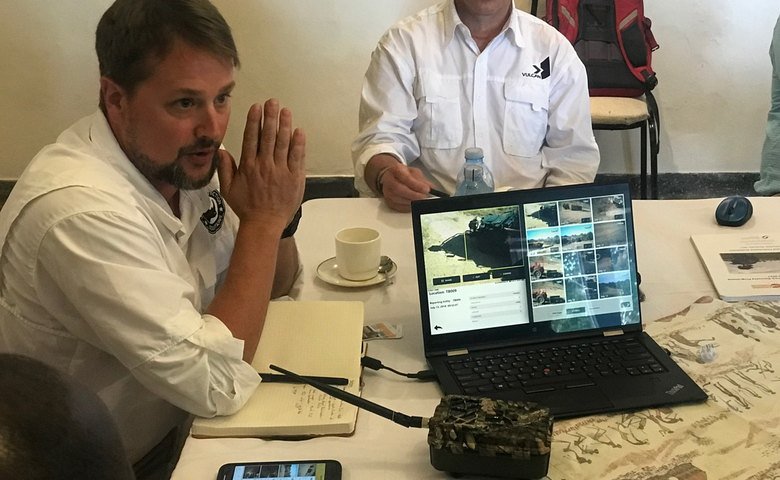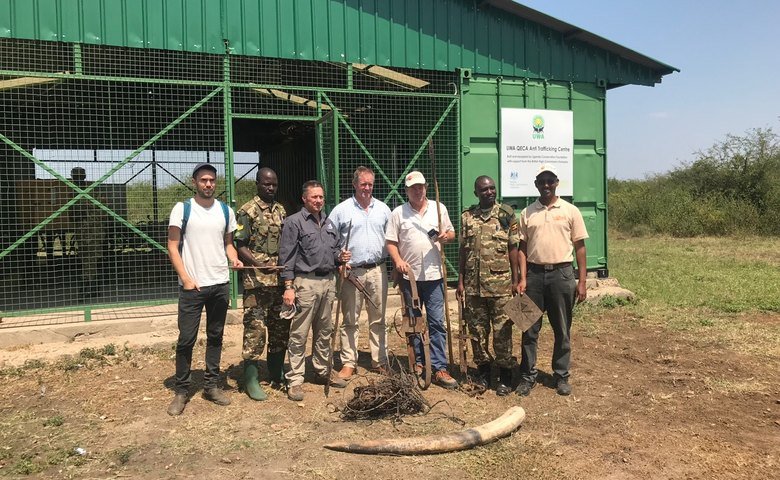Murchison Falls National Park, Uganda
OVERVIEW
Murchison Falls National Park is best known for the most powerful waterfall in the world, which roars with such intensity that the ground trembles around it. But with over 70 mammal and 450 bird species, it is also a critical area for African biodiversity.
Global Conservation is supporting a multi-year deployment of Global Park Defense against illegal wildlife poaching in the Jewel of Africa.
SIZE
420,000 Hectares
GOAL
$834,000
VISITORS BY 2025
60,000
Introduction
March 1864: “A magnificent sight burst suddenly upon us. . . . The fall of water was snow white, which had a superb effect as it contrasted with the dark cliffs that walled the river, while the graceful palms of the tropics and wild plantains perfected the beauty of the view. This was the greatest waterfall of the Nile.”
- Sir Samuel Baker, The Albert N’yanza
Sir Samuel Baker and Lady Florence Baker were the first Europeans to see Murchison Falls. Nearly a hundred years later, Ernest and Mary Hemingway survived after their plane plunged to the earth near Murchison Falls, only to have the rescue plane crash and burn, too, on take-off. Days later, the Hemingways read their own misinformed obituaries in the papers from the safety of their hotel in Nairobi.
Murchison Falls National Park is best known, though, for the most powerful waterfall in the world. Every second, the equivalent of 200 bathtubs full of water is forced through a gorge less than seven paces wide. The pressure is so great that the ground trembles around it. The water then plummets 43 meters before flowing out toward Lake Albert as a placid river whose banks are dense with hippos, crocodiles, waterbuck and buffaloes.
Murchison Falls is just one part of the 384,000-hectare Murchison Falls National Park (MFNP), established in 1952 and now the largest and most-visited national park in Uganda. The Victoria Nile runs through it, its wide, white rapids flanked by riverine forest and rust-red cliffs. Safari-goers from all over the world motor across the savannas and woodlands that straddle the river. Overhead, vibrant hot-air balloons carrying tourists float like a dream through the dawn mist.
With the thrum of the Falls as the bassline, everything is set to the East African soundtrack: the rumble of an elephant, the honk-grunt of a hippo, the trill of a fish eagle, the breathy call of a leopard like a saw on wood.
History
During the 1960s, Murchison Falls was not only the most-visited park in Uganda, but was also among the most popular in all of Africa. MFNP was known for its large populations of the Big 5 (leopards, lions, elephants, buffaloes, and rhinos) and for its chimpanzees. The park contained some of the largest concentrations of wildlife in Africa: an estimated 15,000 elephants freckled the landscape with their iconic silhouettes, 14,000 hippos guarded the river, and 26,500 buffaloes stampeded across its savannas.
But in the 1970’s and early 80’s, as Uganda sank into civil war, wildlife populations declined. During a 1995 census, only 200 elephants, or just 1.3% of their pre-war population, had survived. Buffaloes plunged to around 1,000, and hippos to 1,500.
Natural Heritage
Now, the park once again contains over 70 mammal and 450 bird species and an ambitious recovery plan is underway. Large herbivore numbers have doubled in recent years. Three-quarters of all of the world’s Rothschild giraffes live here, and four of the Big 5 (all but the rhino) survive. The rare shoebill stork calls MFNP home, along with a unique antelope called the Ugandan kob. Over 600 chimpanzees live in the Budongo Forest, the largest mahogany forest in East Africa.
Threats to Murchison Falls
However, the park still faces challenges. For one, over 40% of Uganda's oil reserves lie under MFNP, and a consortium of oil companies are now engaged in drilling.
Further, Uganda has one of the fastest-growing human populations in the world, with 300,000 people living within 200km of MFNP. To sustain themselves, local communities use snares to hunt animals like antelope and primates. Snares are a major problem in MFNP, and the Uganda Wildlife Authority estimates that they have seized seven tons of snares over the past three years. With the construction of 8 new ranger outposts since 2013, snare confiscations have decreased dramatically.
Until last year, when the Uganda Wildlife Authority deployed 70 new rangers, just 50 rangers patrolled the entire park. To make matters worse, rangers are often tempted into corrupt activities due to their low salaries, which are under $9 per day. Communications have been poor: cell service covers less than 10% of the park, and remote ranger stations have been unable to call for emergency medical support or reinforcements when they encounter well-armed poaching groups.
Like in many parts of Africa, commercial poaching by international syndicates is a major problem in MFNP. Poachers buy illegal firearms from nearby conflict zones, using them to hunt large animals to sell for their meat and ivory. Already, rhino have been wiped out throughout Uganda, and over 3,000 elephants have been killed in this region over the past ten years. In 2018, more than 40 tons of ivory were confiscated worldwide; 80% of African seizures were made in Tanzania, Kenya and Uganda.
Saving Murchison
We don’t yet know how many elephants survived the past decade of intensive poaching in Murchison Falls. Global Conservation, the International Elephant Foundation and Save the Elephants have sponsored a comprehensive Elephant and Wildlife Census in the park using state-of-the-art imaging technology. These airborne imaging systems will also help to generate detailed land-use and deforestation maps for park management and wildlife corridor planning. Save the Elephants is working with world-renowned pilot Richard Lamprey, who undertook much of the Great Elephant Census flights for Vulcan across Africa.
Global Conservation is also investing in a multi-year Global Park Defense program to bring park-wide communications, the Vulcan domain awareness system, cellular trailcam networks, long-range thermal cameras, and real-time command and control. Already, we’ve rolled out a satellite comms network, enabling rangers to connect to HQ and coordinate with other ranger patrols. These smartphones also support the SMART Patrolling system for collecting data on poaching and biodiversity.
Protecting this unique ecosystem is critical both for its innate value and its value to the Ugandan economy.
We are now supporting the establishment of a Community Tourism Association with certified guides to become ambassadors for the park. The tourism industry in Uganda employs about 1.2 million people, and the tourism industry raises about $1.5 billion a year, or 9% of the country's Gross Domestic Product. Over 50,000 tourists visit MFNP each year, generating over $2 million in revenues. The Uganda Wildlife Authority contributes 20% of these revenues to local community projects, including clinics and schools.
Deploying Global Park Defense
Global Conservation is committed to support Murchison Falls National Park in five critical areas of park and wildlife protection through co-funding to Uganda Conservation Foundation (UCF) in partnership with the Uganda Wildlife Authority (UWA):
1.
Global Park Defense - we are providing systems including Cellular Trailcam Networks, Vulcan DAS, Satellite Communications, SMART Patrols, Long-range Thermal Cameras, and Command Center equipment.
2.
Land and Naval Patrols - we are funding fuel and maintenance for land, lake and river-based anti-poaching missions against illegal wildlife poaching and illegal fishing.
3.
Community Involvement - we are supporting the establishment of a Community Tourism Association with certified guides to become ambassadors for the park, as well as reward-based informant networks to alert rangers of illegal activities.
4.
Park Expansion - we are supporting planning and government work needed to add wildlife corridors to connect MFNP with nearby forest and wildlife reserves where possible.
5.
Funding of the first Aerial Census - this will achieve an accurate elephant and wildlife population baseline for monitoring and planning.
Aerial censuses are an important way to monitor the health of wildlife populations.
2018 Mission: Focus on Park and Wildlife Protection
Global Conservation support for Murchison Falls National Park began in 2018. That year, we funded equipment for anti-poaching patrols, including satellite communications systems, ranger station solar installations, and a new command center.
Global Conservation purchased sixteen Thuraya Satsleeves with Samsung Galaxy S8 smartphones to equip ranger patrols with real-time communications to aid in emergencies, ambushes, raids and medical evacuations. These Satellite-backed smartphones also can support the SMART Patrolling system for data collection on anti-poaching patrols and biodiversity monitoring. Previously, a lack of communications for active patrol coordination undermined law enforcement and rangers' ability to protect wildlife and park visitors.
Global Conservation is working with Vulcan, Paul Allen’s philanthropic arm, to plan deployment of the Vulcan Domain Awareness System (DAS) at Murchison Falls National Park. We are also bringing in technical expertise from Wildlife Protection Solutions for Cellular Trailcam Networks used for anti-poaching.
At the invitation of Uganda Conservation Foundation and Uganda Wildlife Authority, Global Conservation is investing in deployment of Global Park Defense Systems in close collaboration with these technology and implementation partners.
Species Facing Extinction
In Murchison Falls National Park, we are working with our partners to protect the African lion.
Global Conservation is funding a multi-year Species Population Baseline study for African lions to ascertain progress in Park and Wildlife Protection from our investments in Global Park Defense in Murchison.
Just 400 lions survive in Uganda. African lions are the largest and most imposing carnivore in Africa and the only true social cats, and they have special cultural significance in most countries on the continent. Unfortunately, African lion numbers have plummeted by over 40% in the last three generations due to loss of habitat and conflict with people. Three-quarters of African lion populations are in decline.
Partners in Conservation
With our Partners in Conservation, we are working to restore Murchison Falls National Park to its former glory. We hope that in the coming decades, a tourist in a hot air balloon can once again look down upon a savanna freckled with elephants. The Ugandan economy and the communities that live around the park depend on it.
Uganda Conservation Foundation (UCF)
The Uganda Conservation Foundation (UCF) is focusing on Ugandan wildlife conservation after years of civil conflict and poaching. Their aim is to conserve and preserve the natural environment and the fauna and flora in Uganda.
In 2018, UCF began working to support the Uganda Wildlife Authority and local communities in Murchison Falls National Park, to unite the needs of the Ugandan people with that of conservation and development objectives for the benefit of all.
The Project Director is Michael Keigwin, a 20-year veteran in Ugandan conservation. He has led the turnaround of Murchison Falls National Park.
Ugandan Wildlife Authority (UWA)
The Uganda Wildlife Authority (UWA) is the governing body that regulates park and wildlife conservation in Uganda. UWA manages ten national parks, twelve wildlife reserves, and fourteen wildlife sanctuaries. UWA also provides guidance for five community wildlife areas. It is governed by a board of trustees appointed by the minister responsible for wildlife.
The UWA was established in August 1996 by the Uganda Wildlife Statute, which merged the Uganda National Parks Department with the Uganda Game and Fisheries Department. UWA is now a core department of the Ministry of Tourism and Antiquities.
Murchison Falls NP in the News
Uganda Daily Monitor - Lawyers criticise Murchison Falls park give-away
ChimpReports - Elephant Satellite Collaring for Conservation at Murchison Falls National Park
PML Daily - Best National Parks to Visit in Africa
Forbes - A Comprehensive Guide to a Safari in Uganda's Murchison Falls National Park
PML Daily - UWA successfully translocates 19 giraffes
New Vision - A remarkable wildlife experience in Murchison Falls National Park


